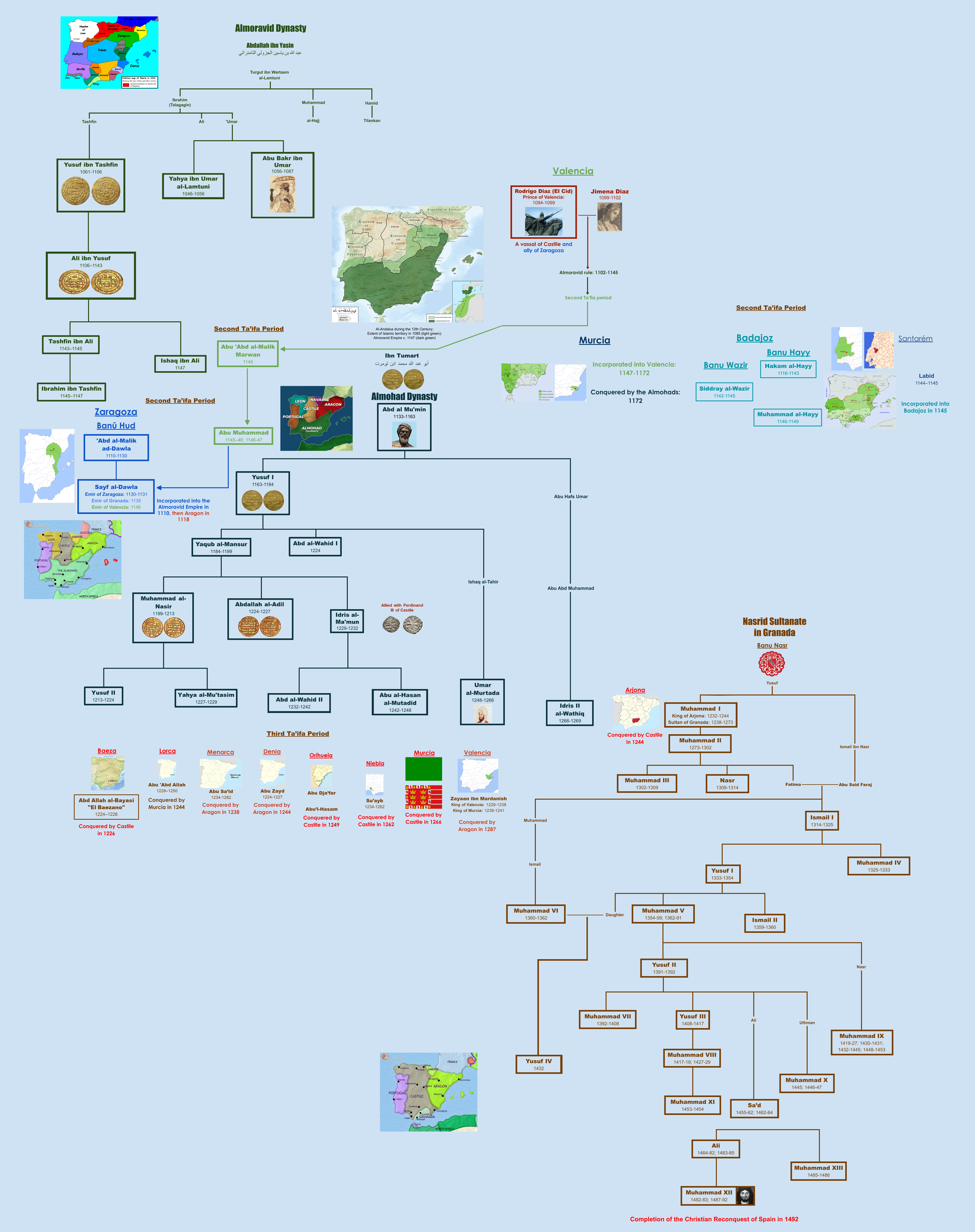HOME | DD
 BenjiSkyler — Late Middle Ages Reconquista
BenjiSkyler — Late Middle Ages Reconquista

#flowchart #medievaleurope #earlymoderneurope #medievalkingsandqueens #chart #diagram #europeanhistory #familytree #history #reconquista #spain
Published: 2021-05-12 18:37:31 +0000 UTC; Views: 2352; Favourites: 11; Downloads: 15
Redirect to original
Description
A more comprehensive historical flowchart of the Islamic dynasties of the Iberian Peninsula from the High to Late Middle Ages.Almoravid Dynasty
Almohad Dynasty
Nasrid Sultanate in the Emirate of Granada
After the fall of the Caliphate of Cordoba , al-Andalus fragmented into smaller ta'ifa kingdoms , spurring the northern Christian kingdoms. These kingdoms were put on edge when Alfonso VI of Castile conquered Toledo . The other ta'ifa rulers invited Almoravid ruler Yusuf ibn Tashfin to turn the tables. The Almoravids achieved decisive victory over Castile in the 1086 Battle of Sagrajas.
The Almoravid Dynasty was relatively short-lived, as it fell to a rival religious movement originating in the Atlas Mountains of the Maghreb--the final fatal blow delivered when Ishaq ibn Ali fell in battle in 1147. Al-Andalus once again broke up into smaller ta'ifa kingdoms, only to be slowly absorbed into the Alhomad Caliphate throughout the 12th Century. The Almohad's hold on the Iberian peninsula began to decline after the 1212 Battle of Las Navas de Tolosa against a coalition of the Christian kingdoms.
During the Third Ta'ifa Period, the remaining Islamic petty kingdoms fell to either Castile or Aragon. Muhammad ibn Nasr of Arjona consolidated his remaining forces around Granada. The Nasrid Sultanate in Granada would maintain a precarious peace with Castile over the next 200+ years until the outbreak of the Granada War in 1482, providing the "Catholic Monarchs" Ferdinand and Isabella the pretext to complete the Christian reconquest of Spain. The sultanate officially met its demise in January of 1492.

























